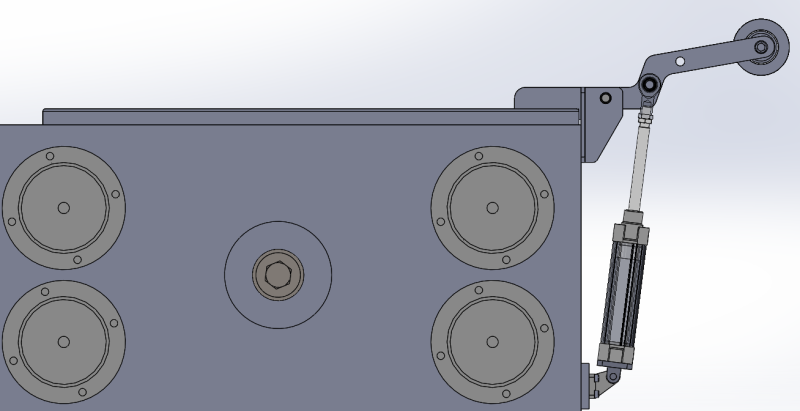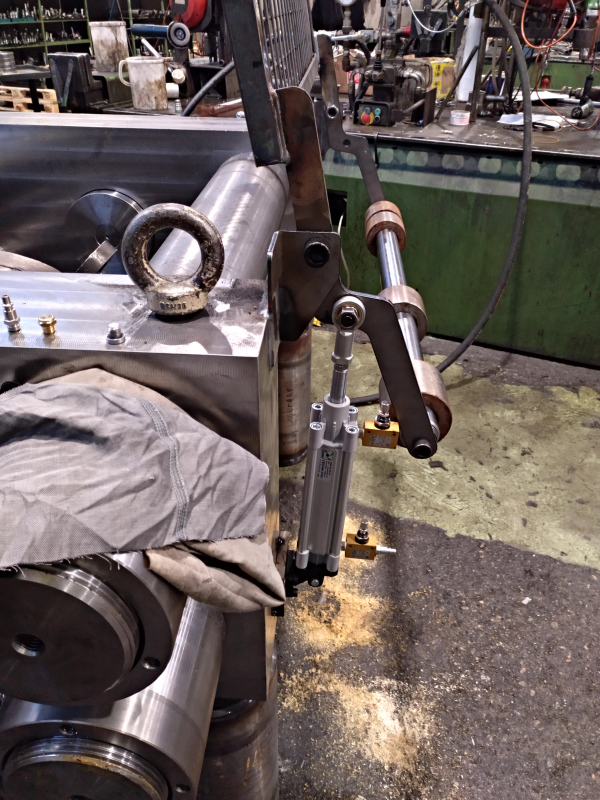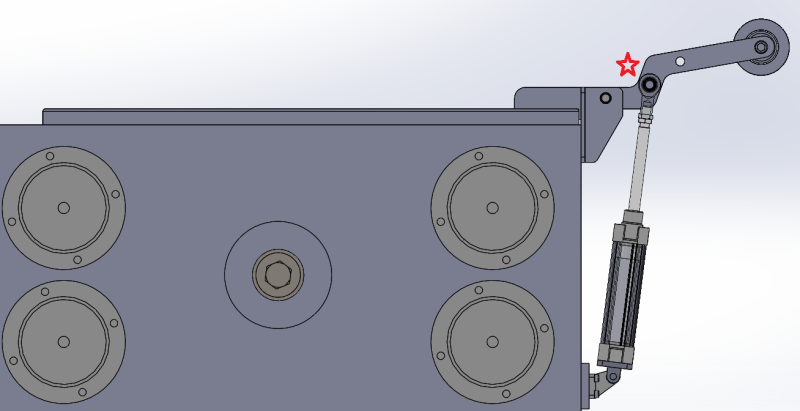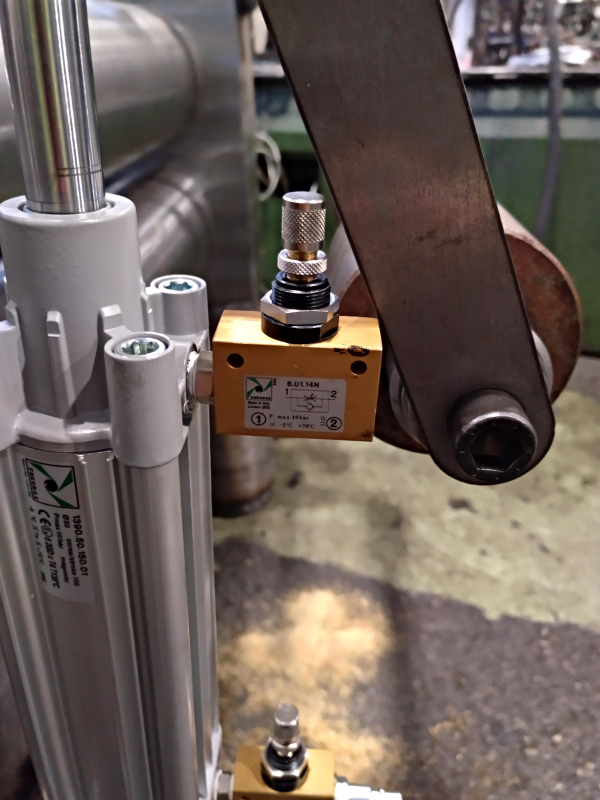gersen
Materials
- Nov 14, 2017
- 27
Hi,
I have a problem with one of my project:
I'm building a movable cover for my machine, see image below.
I want to move this with a pnematic cylinder. The cover is normally opened and the cylinder need to push it colsed.
The problem is that when I give pressure, the cover close way too fast, I think almost 1 m/s. The cover is 60 Kg so this is very dangerous.
I have tried a flow limiting valve on the upper chamber but I don't have any improvement (the air in this chamber get compressed without any difference in the speed of the cylinder).
I have no experience using pneumatic system so any halp is greatly appreciated.
Thank you

I have a problem with one of my project:
I'm building a movable cover for my machine, see image below.
I want to move this with a pnematic cylinder. The cover is normally opened and the cylinder need to push it colsed.
The problem is that when I give pressure, the cover close way too fast, I think almost 1 m/s. The cover is 60 Kg so this is very dangerous.
I have tried a flow limiting valve on the upper chamber but I don't have any improvement (the air in this chamber get compressed without any difference in the speed of the cylinder).
I have no experience using pneumatic system so any halp is greatly appreciated.
Thank you




